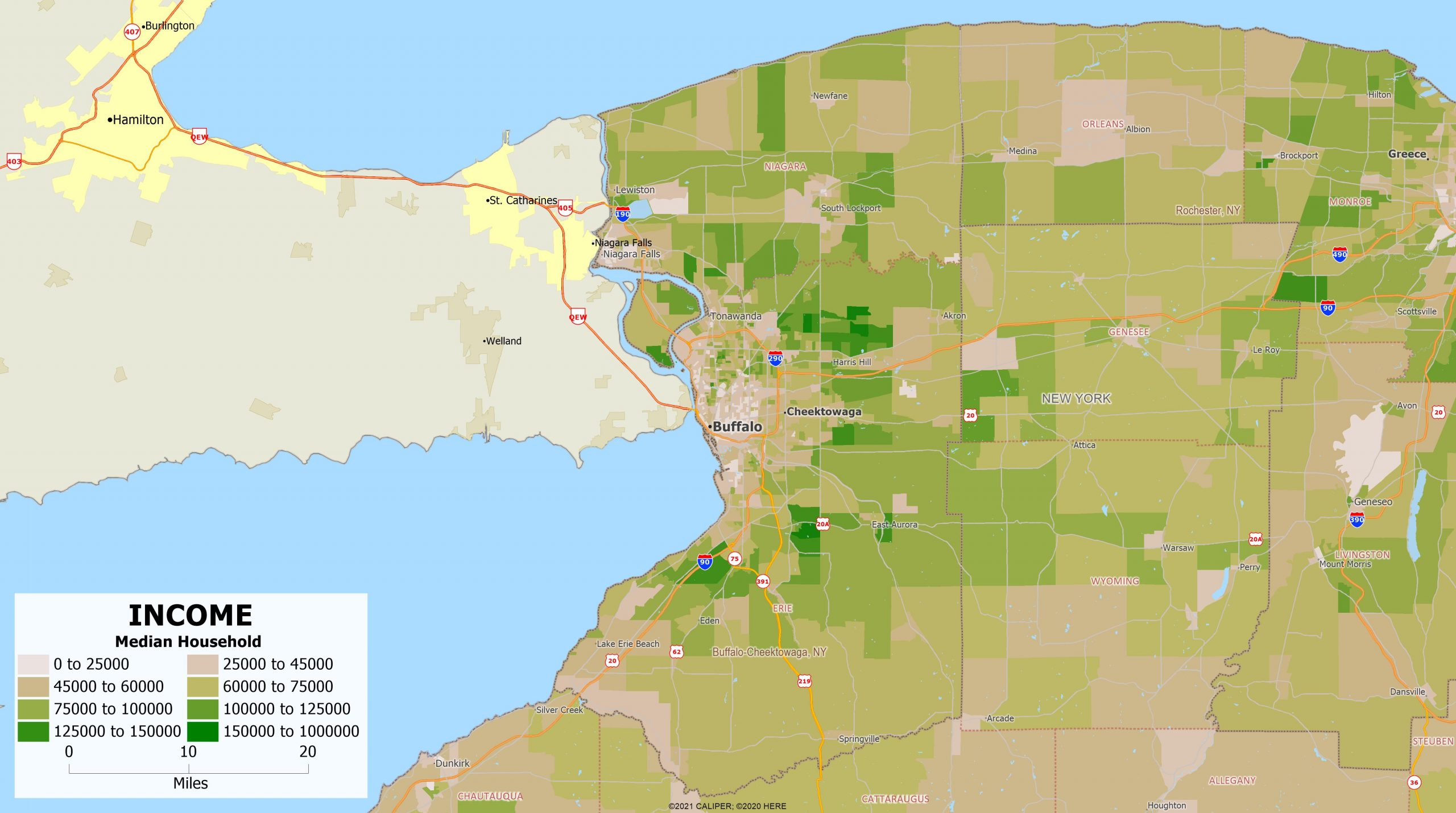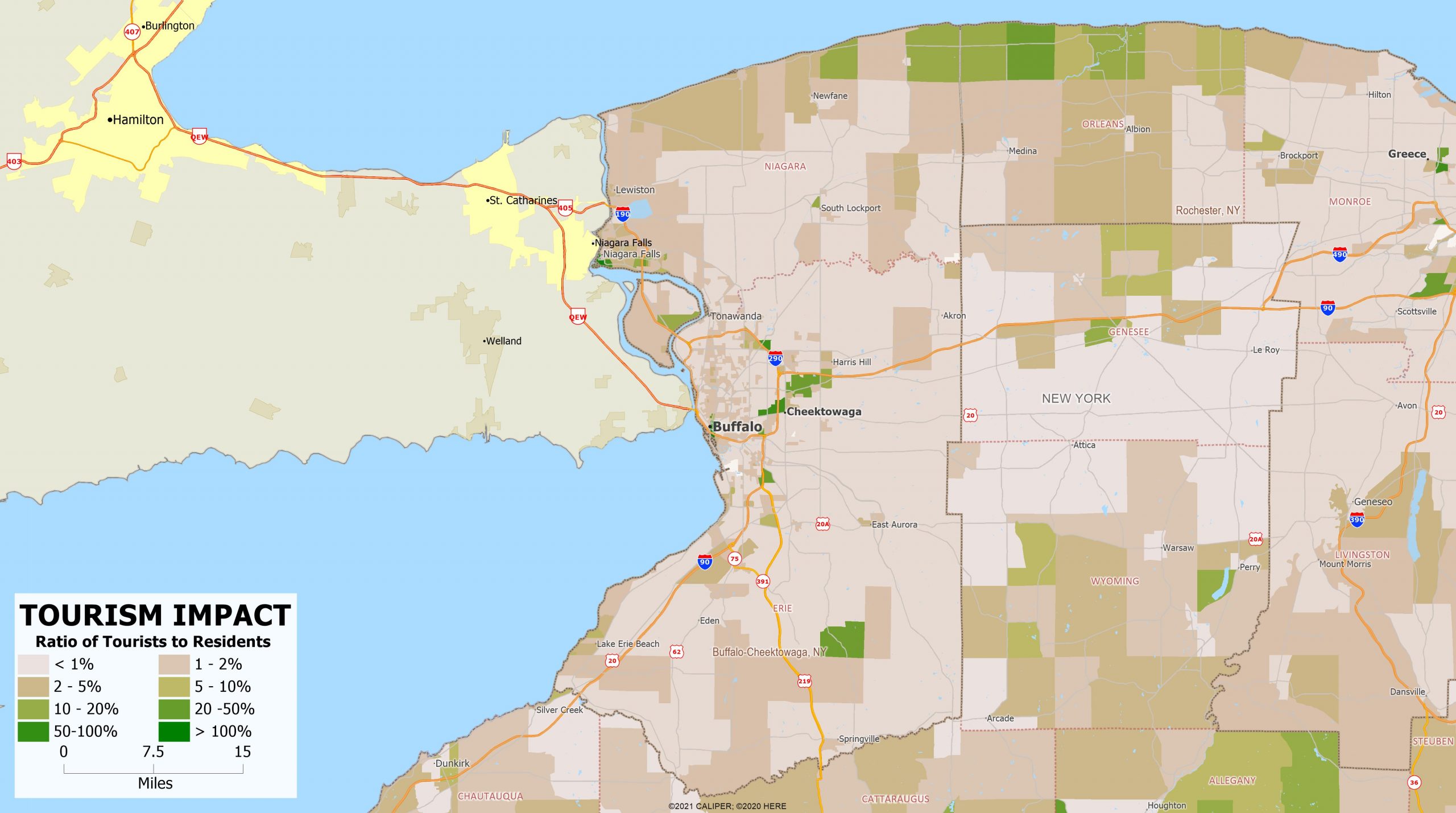Buffalo, New York is a classic geographic study in locational advantage.
After the British burned the city during the War of 1812, and with the opening of the Erie Canal in the 1820’s, the Lake Erie port town of Buffalo grew rapidly so that by 1860, Buffalo was ranked 10th in size of American cities. By 1900, Buffalo was one of the key ports in the grain exports from the newly opened western plains, and on the verge of an industrial boom with the relocation of Lackawanna Steel from Scranton, PA and the newly opened hydro-electric generation at Niagara Falls. The city was ideally suited for exporting grain since the elevation drop from Lake Superior in the west to Lake Erie was minimal, but the drop to Lake Ontario was impassable.
The opening of the St. Lawrence Seaway and the completion of the Welland Canal on the Ontario side of the Niagara River resulted in Buffalo’s major decline as a port city, and the failure of the steel mills (by then Bethlehem Steel) to modernize resulted in their closure in the 1970’s. In 1970, Buffalo had over 1.3 million residents, making it the 23rd largest metropolitan area in the U.S. Today, it is the 49th largest metropolitan area, just ahead of Birmingham, Alabama.

Buffalo has a median age above the national average, and the population is far from diverse, with the non-Hispanic Caucasian population accounting for 76%, above the national average of 60%. With 13.5% of the workforce holding a position in manufacturing, Buffalo is still largely a “blue collar” town. Buffalo’s most dominant Panorama segments are 37 Faded Industrial Dreams (11%), 23 Enduring Heartland (8%) and 36 Olde New England (7%). The climate varies dramatically from summer to winter, with massive snowfall of 95” per year, one of the highest among major metropolitan areas.
Homes in Buffalo are much older than the national average, with the median age of housing stock is 53.2 years, compared to 31.5 nationwide. This puts it at the top of the list for oldest housing of the top 100 metropolitan areas. One quarter of all housing was built prior to 1940. Housing prices are very affordable, with the median house value at $163K, compared to the national average of $240K. Rent is also much lower than the average, at just $717 a month versus the national median of $940. The median household income is also lower than national average of $66K at $60K a year. The map below shows the median household income.

Tourism in the area can mostly be attributed to Niagara Falls, with a particular emphasis on summer tourism. The map below shows the ration of tourists to residents for the metropolitan area.

Buffalo, NY became synonymous with the “rust belt” and has struggled to revive itself ever since. The location of the Tesla Giga New York battery factory in south Buffalo is a source of optimism for a redeveloping city in the coming green energy era.


Recent Comments